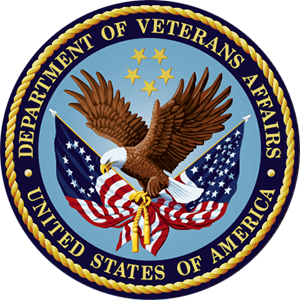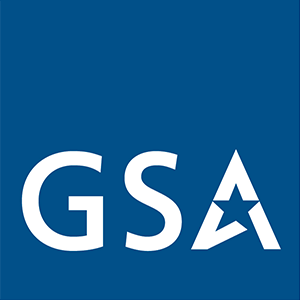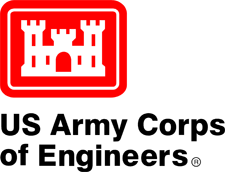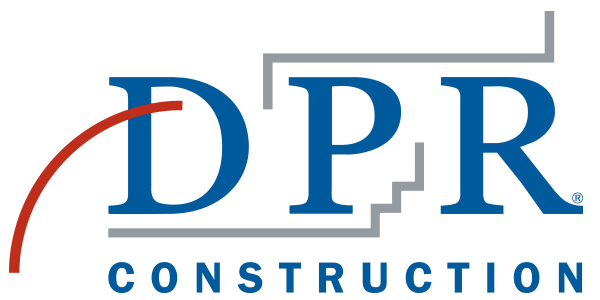Digital Technology Council (DTC)
To better serve the ever-evolving architecture, engineering, construction, and operations (AECO) industry, the National Institute of Building Sciences has renamed the Building Information Management Council to the Digital Technology Council.
Mission
To advance digital transformation for the built environment through the delivery of consensus- based industry standards, research, and thought leadership focusing on value-driven outcomes.
Vision
To convene industry to develop consensus and empower transformative digital technology strategies across stakeholders that drive improved project delivery and operational processes.

Thought Leadership
Providing thought leadership for industry work process improvements
Information Standards
Enabling and promoting the development of information standards and providing a forum to share lessons learned and develop best practices
Education
Developing, promoting, and delivering education on information exchange standards and proven practices
Membership and Sponsorship
The Digital Technology Council (DTC) brings together a cross-section of public and private building leaders to deploy and promote national information standards and best practices. Its membership is comprised of individuals and organizations representing government agencies, academia, and the private architect, engineer, and construction firms. The following sponsors are a representation of that membership and have pledged their support to the initiatives of the DTC.
Officers
The five-member Digital Technology Council (DTC) Board of Direction (BOD) provides vision, leadership, and operational guidance for the Council while ensuring effective management of resources to advance the vision of the Council.
Officers are elected from within the council membership through a nominations and election process.
Chair
Alex Belkofer
Vice Chair
David Morales
Secretary
Swetha SadanandaMember at Large
Past Chair
Rachel Riopel
NIBS Board Liaison
Sandra Benson
Procore Technologies, Atlanta, GA
Evelyn Fujimoto
EMF Collaborative, Austin, Texas
Staff Lead
Jay Kline
Director, Project Management, National Institute of Building Sciences
Activities
- Champion the Council's mission to industry and potential sponsors
- Provide input to strategic direction and assist with prioritizing programs and activities
- Cultivate a sustainable organization, developing programs and projects that meet the business objectives of sponsors and members
- Provide technical and financial oversight of the Council projects, with support from the NIBS Board Liaison, and staff
Digital Technology Council (DTC) Subcommittees
Subcommittees established by the Digital Technology Council (DTC) BOD serve at the discretion of the DTC BOD. DTC subcommittees shall be utilized by the DTC BOD to examine specific topics in need of attention. The DTC BOD created the following Subcommittee:
DIGITAL TWIN INTEGRATION SUBCOMMITTEE (DTI-S)
Chair: Scott McClure, USAF, North Wind Group
Vice-Chair: Zahra Ghorbani, Penn State University
Vice-Chair: Marc Goldman, ESRI
Vice-Chair: Francesca Maier, Fair Cape Consulting
BIMC BOD Liaison: TBD
DESCRIPTION
To respond to industry needs and in support of continued innovation throughout the industry, the mission of the NIBS Digital Technology Council Digital Twin Integration (DTI) Subcommittee (DTI-S) is to (a) define the role of and develop the relationship between Digital Twins and the NIBS National BIM Program and National BIM Standard – United States® (NBIMS-US™), and to (b) coordinate with authoritative organizations and consortia in BIM and Digital Twin integration efforts.
SCOPE
The Subcommittee shall:
- Develop a white paper and position statement describing/defining the relationship between BIM and Digital Twin technologies and standards.
- Form and maintain partnerships with authoritative organizations and consortia who are defining Digital Twin standards and resources for public and private industry to mutually inform development. Coordinate with government agencies and industry on requirements, best practices and potential use cases for the integration of BIM and Digital Twin.
- Propose projects and activities to develop resources (e.g., tools, processes, guidelines, standards) to support integration of BIM and Digital Twin in the built environment.
OVERALL SCHEDULE
The DTI-S will develop and maintain an annual operational plan which outlines activities and specific projects to be pursued to include periodic milestones with deliverables along with any resources required to achieve the goals. This shall be coordinated with and approved by the Digital Technology Council BOD.
COLLABORATION
The DTI-S is dependent upon the voluntary efforts of its members to collaboratively engage with the drafting of documents and prototyping of tools, to review the products of other efforts within and around the DTI-S and participate as liaisons with groups deemed significant and relevant by the DTI-S. Industry participation is especially important because the alignment between them and a national standard will streamline development efforts between the BIM and Digital Twin communities. This further fosters improvements in the speed and efficiency with which individual, organizational, and industry efforts reach full maturity and ubiquity. Government agency participation is similarly critical to ensuring a more manageable communication effort between vendors and the Government alike. This improves contract oversight, ensures that right-sized solutions are available in the market, and that Government agency strategies can be aligned with a degree of certainty on the state and direction of the market. This participation may be supplemented by funded resources in alignment with the annual planning cycle.
The DTI-S will identify organizations, firms and government agencies which are likely to benefit from the clear and defined integration of BIM and Digital Twin disciplines. It will rely on the assistance of the Digital Technology Council and NIBS in encouraging participation in and support of the workgroup as it works to facilitate, foster, and maintain industry engagement.
National BIM Standard-United States® (NBIMS-US™) Committees & Workgroups
NBIMS Project Committee
The NBIMS-US Project Committee (National BIM Standard-United States Project Committee) is a project committee of the Digital Technology Council (DTC), formerly known as the Building Information Management Council (BIMC), which is a council of NIBS. The NBIMS-US Project Committee brings together the broadest and deepest constituency ever assembled for the purpose of establishing and managing through an Industry consensus process a series of open source National standards and guidance for all aspects of Building Information Modeling.
NBIMS Planning Committee
The National BIM Standard-United States (NBIMS) Planning Committee (PLC) administers the affairs and consensus process of the NBIMS-US Project Committee (PC) and Workgroups (WG). The goal of the PLC is to create a collection of standards and guidelines that support the implementation of building information modeling and management in planning, design, construction and operations of buildings and infrastructure in the United States and beyond.
A full update of the NBIMS-US will be published every 3 years following a review of the existing published version and annual interim modules. The key feature of this new 3-year cycle and annual module release process is that modules are developed continually as improvements or new content in the form of individual modules are developed. The PLC will accept proposals, identify priorities, stand up workgroups, ballot candidate modules, and publish approved modules as they become available. A public-facing website will display initiatives are under development and include workgroup work plans, candidate modules, as well as approved and final modules.
NBIMS PLC Structure
Under a newly-reorganized structure, the NBIMS PLC consists of a chair, vice chair, secretary, as well as 12 Digital Technology Council (DTC) members, representing core segments of the industry. Every PLC member must be a member-in-good-standing of the NIBS Digital Technology Council, formerly known as the NIBS BIM Council, and the NBIMS-US Project Committee.
Current officers and members of the PLC are as follows:
| Name | Organization | Location | Role |
|---|---|---|---|
| John I. Messner, PhD. | Department of Architectural Engineering The Pennsylvania State University |
University Park, PA | Chair |
| Carrie Sturts Dossick, P.E. | University of Washington | Seattle, WA | Vice Chair |
| Robert Glover | Barton Malow Builders | Richmond, VA | Secretary |
| Russell Manning, PhD, LEED AP, CEFP, CRL | ICC | NIBS BOD Liaison | |
| Paul Audsley, Assoc. AIA | NBBJ | Columbus, OH | Member |
| Ivan Jaramillo | Autodesk, Inc | Member | |
| Edmund Newman | GSA | Washington, DC | Member |
| Rachel Riopel | HDR | Minneapolis, MN | Member |
| Andy Smith | Mooresville, NC | Member | |
| Van Woods | U.S. Army Corps of Engineers | Seattle, WA | Member |
The PLC created the following Workgroups to lead the development of the new NBIMS modules. A description of the focus of each workgroup is available on the following pages:
Chair: Ralph Kreider
Planning Committee Liaison: Johnny Fortune
Description
The primary focus of this Workgroup (WG) is to identify appropriate BIM Use Definitions and Development Methodology for inclusion in the NBIMS. This includes gathering BIM Uses from existing versions of NBIMS as well as potentially other sources. Each BIM Use should be discussed by the WG and evaluated for any necessary revisions to align with current industry practices. The WG should also engage in sound scholarly research and user interviews or surveys to identify additional BIM Uses that are candidates for inclusion. Additionally, the WG should include a standardized Development Methodology to BIM Uses (such as the approach included NBIMS v3) to provide flexibility of creating custom project-specific BIM Uses that still align with a National Standard. The end state should be one where project stakeholders can pick from a well-developed list of BIM Uses to require them on a project or require a defined process for developing a custom BIM Use. While the BIM Use Definitions are not intended to describe means and methods, all necessary components of the BIM Use should be identified (i.e., prerequisites, input, output, etc.).
Collaboration
This WG is one of several WGs that are focused on topical areas within the NBIMS. All WGs should coordinate any overlapping topics with the leadership of the related WG and the Planning Committee (PLC). Topics outside of the WGs focus area that are discovered during WG activities should be brought to the attention of the PLC for consideration. Additionally, all BIM Uses suggested by other WG must be considered to properly align the various portions of NBIMS. The information contained herein is not intended to be an exhaustive list of responsibilities but rather a starting point.
Scope
Coming soon.
Overall Schedule
Coming soon.
Deliverable
Coming soon.
Proposed Required Resources
The WG will meet on a monthly basis at a minimum to make progress toward developing the BIM Use Definitions for NBIMS. These meetings will be virtual meetings unless there are events with multiple WG members attending to allow for face-to-face meetings, e.g., NIBS conference. The content development will require time from a graphic designer and resources to host content online.
Chair: Dianne Davis
Planning Committee Liaison: John Messner
Description
The BIM Project Execution Planning Guide (BEP Guide) and corresponding templates included in NBIMS were initially developed in October 2009. The BEP Guide outlines a structured approach for a project team to develop a BEP through a collaborative process leveraging a consistent template for BEP content. In 2012, Version 2.1 of the BEP Guide and Templates were released, and they are incorporated into the NBIMS-US.
While the BEP Guide and Template have been instrumental in driving consistency in the planning process, many large owners and project teams have been improving upon the initial versions of the BEP Guide and Template. There is a need to collect, evaluate, and compile core revisions to the documents that leverage the best content revisions through a structured evaluation.
The goal of this WG is to develop a comprehensive BEP Guide and Templates that can be used as a standard deliverable, with structured extensions or customizations by owners and other project team members if needed.
Collaboration
This WG is one of several WGs that are focused on topical areas within the NBIMS. All WGs should coordinate any overlapping topics with the leadership of the related WG and the Planning Committee (PLC). Topics outside of the WGs focus area that are discovered during WG activities should be brought to the attention of the PLC for consideration. Additionally, the BEP procedure managed within this WG will need to be aligned with other WG content related to BEP within various portions of NBIMS. The information contained herein is not intended to be an exhaustive list of responsibilities but rather a starting point.
Scope
To meet the goal, the WG will focus on:
- Collecting and developing a content analysis of BEP template examples from a variety of owners and other project team members;
- Developing a revised BEP Guide and Template that incorporates core improvements; and
- Developing a BEP information exchange that captures the content for a standard BEP within a digital exchange to enable team members to build and easily transfer information regarding BEPs.
Overall Schedule
Coming Soon.
Deliverables
- BIM Project Execution Planning Guide online document
- BIM Project Execution Planning Template in digital format
- BIM Project Execution Planning Information Exchange Definition
Proposed Required Resources
The WG will meet on a monthly basis at a minimum to make progress toward developing the BEP resources for NBIMS 2020/2021. These meetings will be virtual meetings unless there are events with multiple WG members attending to allow for face-to-face meetings, e.g., NIBS conference. The development of an updated BEP Guide and templates will require time from a subject matter expert and research into the current BEP best practices, BEP template content analysis, and BEP information exchange definition. The content development will require time from a graphic designer and resources to host content online.
Chair: Connor Christian
Planning Committee Liaison: Carrie Sturts Dossick
Description
The primary focus of this Workgroup (WG) is to define the scope and content for minimum core BIM implementation on a project. This candidate module is intended as a standard to define the minimum requirements for a BIM-enabled project that refers to other comprehensive modules such as Industry Foundation Classes, COBie, BIM Use Definitions, BIM Execution Planning and Modeling Requirements.
Motivation
This module will support industry implementation of BIM through the definition of minimum requirements. The NBIMS content, such as IFC, often focuses on comprehensive definitions without guidelines or requirements as to how to implement these definitions and standards. The Minimum core BIM requirements module would reference these other standards and provide a guide for minimum viable application of these for a BIM-enabled project.
Collaboration
This WG is one of several WGs that are focused on topical areas within the NBIMS. All WGs should coordinate any overlapping topics with the leadership of the related WG and the Planning Committee (PLC). Topics outside of the WGs focus area that are discovered during WG activities should be brought to the attention of the PLC for consideration. As other modules of the standard are revised, this minimum core BIM module must be reviewed for agreement and compliance with referenced modules. The information contained herein is not intended to be an exhaustive list of responsibilities but rather a starting point.
Scope
This candidate module focuses on the project requirements for minimum BIM scope that defines the basic BIM requirements. To this end, the Workgroup with the support of subject matter experts will review existing standards (national, international, state, local) that define BIM project requirements and develop an interim report to support the development of this minimum BIM requirements language. Where possible, this candidate module will refer to other NBIMS modules (e.g. BIM Uses, Modeling Requirements such as LOD and M3, BIM Execution Planning, COBie, and IFC). This Workgroup will then develop the candidate module language for ballot.
Overall Schedule with Milestones
| Milestone | Schedule |
|---|---|
| Form Workgroup | 3 months |
| Develop WG Work Plan | 3 months |
| Hire subject matter expert | 2 months |
| Conduct Best Practice review with Interim Report 1 | 6 months |
| Develop candidate module draft language | 3 months |
| Refine and revise candidate module for ballot | 3 months |
| Ballot candidate module PLC | 2 months |
| Ballot candidate module PC | 2 months |
Deliverable
The end state will be a well-developed minimum core BIM candidate module that define the requirements for a minimal viable BIM-enabled project. The candidate module will be balloted for review, comment and approval of the NBIMS-US Project Committee.
Proposed Required Resources
This module is new content for the standard and arguably the heart of the NBIMS. We recommend a kick-off face-to-face meeting for the Workgroup to launch the effort, with monthly virtual meetings subsequently. We also recommend NIBS enlist subject matter experts to conduct research on the best practices already developed in the market place (interim report 1] and draft NBIMS standard language for this candidate module for review and revision by the WG volunteer members. We understand that generally NIBS staff cannot support all the online meetings.
Co-Chairs: Brian Haines & TJ Meehan
Planning Committee Liaison: John Messner
Description
The mission of the NIBS Digital Technology Council (formerly known as the BIM Council) Construction-to-Operations Building Information Exchange (COBie) Workgroup (CWG) is to exercise stewardship of the Construction-to-Operations Information Exchange Model View Definition (MVD) and data schema. The Workgroup fulfills this mission in three ways:
- Ongoing technical development of COBie to meet AECOO industry needs;
- Supporting the process of incorporating successive versions of COBie in the National BIM Standard – United States® (NBIMS-US™);
- Promoting the adoption and implementation of COBie by the building industry
The CWG will develop and maintain an annual operational plan which outlines the activities and specific projects to be pursued within the next year to include quarterly milestones with deliverables along with any resources required to achieve the CWG goals.
Members
| Name | Organization | Role |
|---|---|---|
| Brodt, William | National Aeronautics and Space Administration | Member |
| Carrasquillo, Mariangelica | U.S. Army Corps of Engineers, Engineering and Construction |
Member |
| Chobot, Marty | Invicara Pte Ltd | Member |
| Dalbert, Thomas | Onuma, Inc. | Alternate |
| Gran, Danielle | Kristine Fallon Associates, Inc. | Member |
| Gude, Ortez | Corvado | Member |
| Jaramillo, Ivan | Autodesk, Inc. | Alternate |
| Joels, Kerry | Member | |
| Kim , Yong Ku | Onuma, Inc. | Alternate |
| Mencarini, Robert | Building Informatics | Alternate |
| Mies, Chuck | Autodesk, Inc. | Alternate |
| Moore, Frank | Autodesk, Inc. | Alternate |
| Nisbet, Nicholas | buildingSMART UK | Member |
| Onuma, Kimon | Onuma, Inc. | Member |
| Peterson, Brad | ARCHIBUS, Inc. | Member |
| Powell, Ross | TMA Systems | Member |
| Shirey, Don | Bentley Systems, Inc. | Alternate |
| Smith, Andy | Member | |
| Starkov, Igor | EcoDomus | Member |
| Stefanidakis Sr., Nick | ARCHIBUS, Inc. | Alternate |
| Sullivan, John | Autodesk, Inc. | Member |
| Tardif, Michael | Building Informatics | Member |
| Taylor, Reginald | NIH | Member |
| Tobias, Brandon | NAVFAC | Alternate |
| Wang, Grace | Member | |
| Watson, James | Member | |
| Whittaker, Jim | Facility Engineering Associated, PC | Member |
| Willette, Michael | ARCHIBUS, Inc. | Alternate |
| Wood, Doug | IBM | Member |
Standard Resources
- COBie 2.4 MVD (Technical Specifications)
- COBieLite (Technical Specifications)
- Change Logs
Additional Resources
Chair: Aaron Costin
Planning Committee Liaison: Andy Smith
Description
The focus of this Workgroup (WG) is to:
- Define an information exchange framework to standardize the capture of business requirements, data structure and software implementation for BIM use cases
- Participate with the other NBIMS-US workgroups to provide guidance for the development of information exchanges
- Research other industry initiatives for information exchanges to leverage existing capabilities in an effort not to create competing exchanges
Definitions
Information Exchange (IE) – is the act of transferring structured data from one machine, the sender, to another machine, the receiver.
Structured data – are facts organized and recorded in a scheme that is interpretable and consumable by a machine.
Motivation
The business need for an information exchange standard is critical to the success of the US-NBIMS. Without information exchanges the rhetoric of the possibilities of building information modeling (BIM) is only academic. For the value of BIM to be recognized information exchanges must be executable within the project delivery contractual process. Information exchanges must be implementable by machines, well documented, trust-worthy, and add business value.
Collaboration
This Workgroup is a consultant to all other US-NBIMS Workgroups in that this Group will not initiate the need for an information exchange but will assist with executing the idea. This Workgroup should be an advisor as to the technical possibility and practicality of a successful information exchange.
Audience
The work product of this Workgroup will provide guidance and instruction for software developer to implement the information exchange.
Scope
Coming soon.
Overall Schedule with Milestones
| Milestone | Schedule |
|---|---|
Form Workgroup
|
3 months |
Develop Work Plan
|
3 months |
Socialize and Seek Agreement
|
6 months |
Collaboration
|
On-going |
Deliverable
The deliverable from this Workgroup will be:
- A method for defining an "information exchanges" (IE) that is based on "structured data" that will enable the US-NBIMS.
- Procedures and policies for submitting for comment, the inclusion of edits and amendments, and consensus agreement for an information exchange definition.
- A Work Group of diverse industry knowledgeable professionals to motivate and create activity to create information standards to enable the US-NBIMS.
Proposed Required Resources
The WG will meet on a monthly basis at a minimum to make progress toward developing the BIM Use Definitions for NBIMS. These meetings will be virtual meetings unless there are events with multiple WG members attending to allow for face-to-face meetings, e.g., NIBS conference. The content development will require time from a graphic designer and resources to host content online.
Chair: Yuqing Hu
Planning Committee Liaison: John Messner
Description
The mission of the NIBS Digital Technology Council (formerly known as the BIM Council) Product Data Requirements Workgroup (WG) is to define the desired product performance and sustainability data elements, the schema for product-specific attributes extending the Construction-to-Operations Information Exchange Model View Definition (MVD), and data schema into performance and sustainability data required for product selection, commissioning, maintenance, and operations.
Collaboration
This WG is one of several WGs that are focused on topical areas within the NBIMS. All WGs should coordinate any overlapping topics with the leadership of the related WG and the Planning Committee (PLC). Topics outside of the WGs focus area that is discovered during WG activities should be brought to the attention of the PLC for consideration. Additionally, the BIM product data schema, template, and MVD generated by this WG must be considered to properly align the various portions of NBIMS.
Scope
The Workgroup fulfills this mission in multiple ways:
- Development of product-specific data tables to meet owner needs for product selection, commissioning, maintenance, and operations.
- Promote the adoption and implementation of standard data tables by product manufacturers, product vendors, designers, constructors, owners, and software firms supporting the building industry.
- Support the process of incorporating product data tables into the National BIM Standard – United States® (NBIMS-US™) and coordinating with the standards of buildingSMART International.
- Supporting research validating the benefits of using the standard data and schema.
Overall Schedule
TBD
Deliverables
The WG will develop and maintain an annual operational plan which outlines the activities and specific projects to be pursued within the next year including periodic milestones with deliverables along with any resources required to achieve the WG goals. Some specific deliverables will include:
- BIM product data schema
- Product MVD for product selection, commissioning, maintenance, and operations.
- An integrated product dataset (TBD)
Proposed Required Resources
The WG is dependent upon the voluntary efforts of its members to develop product-specific data tables, especially for products that do not have a well-established history of requirements. Industry participation is especially important because of the increasing data requirements to support sustainable product selection and total cost of ownership requirements. The WG will meet on a monthly basis at a minimum to make progress toward developing the BPD resources for NBIMS 2022/2023. These meetings will be virtual meetings unless there are events with multiple WG members attending to allow for face-to-face meetings, e.g., the NIBS conference. The development of a BPD will require time from a subject matter expert and research into the current BPD database, existing BPD template, and MVD. The content development will require time from a graphic designer and resources to host content online.

National BIM Standard-United States®
The National BIM Standard-United States® (NBIMS-US™) provides consensus-based standards through referencing existing standards, documenting information exchanges and delivering best business practices for the entire built environment. With open BIM standards, we can build detailed models and deliver accurate products that can be used during commissioning and operation to ensure facility functionality throughout the life of the facility and to deliver high performance, carbon neutral, and net zero energy based facilities.
VISIT NBIMS-US™ NBIMS-US™ PROJECT PROFILE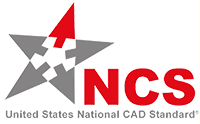
United States National CAD Standard® (NCS) V6
The NCS is a consensus standard incorporating industry publications. It is comprised of interrelated standards, guidelines and tools for uniformly organizing and presenting facility drawing information. It is the only comprehensive standard for facility planning, design, construction and operation drawings. The NCS consists of The American Institute of Architect's CAD Layer Guidelines, Construction Specifications Institute's Uniform Drawing System (Modules 1-8), and National Institute of Building Sciences' BIM Implementation & Plotting Guidelines.
VISIT NCS NCS PROJECT PROFILE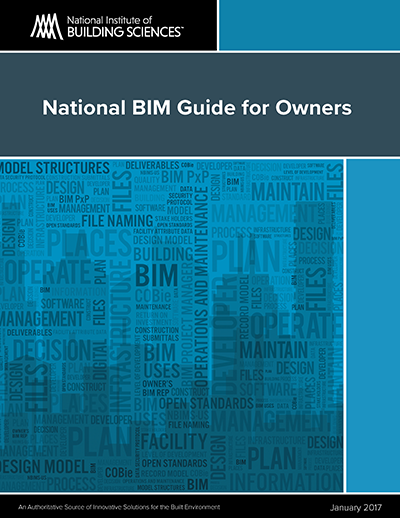
National BIM Guide for Owners
The purpose of the National Building Information Modeling Guide for Owners (NBGO) is to outline for the building Owner how to develop and implement requirements for the application of Building Information Modeling (BIM) for internal policies and procedures, and explain how to include these requirements in contracts to plan, design, construct and operate buildings. This Guide uses the term “building” generically, in keeping with the terminology of “Building Information Modeling.” It is intended to apply to information modeling for the built environment: site elements and facilities as well as buildings.. [January 2017 / 36 pages]
VIEW/DOWNLOAD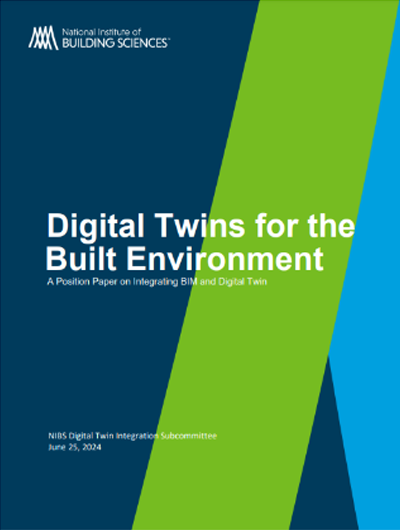
Digital Twins for the Built Environment
This position paper, written and published by the NIBS Digital Twin Integration Subcommittee (DTI-S), encourages the integration of Building Information Modeling (BIM) and Digital Twin technology, presenting a groundbreaking opportunity for the architecture, engineering, construction, and operations (AECO) industry. This integration sets the stage for innovation, efficiency, and collaboration and envisions a future where BIM and Digital Twin coexist and synergize to drive sustainability and enhance operational performance. By identifying this opportunity, the DTI-S offers the industry a plan for advancement that leverages the full spectrum of digital capabilities. This paper showcases how through strategic integration, leaders, technologists, and AECO practitioners can accelerate significant industry-wide change and engage in informed decision making. [June 2024 / 54 pages]
VIEW/DOWNLOADShould you have any additional questions about the Digital Technology Council (DTC) or would like to know more about the Council's activities, please contact:
Staff Lead
Jay Kline
Director, Project Management
Roger J. Grant, CSI, CDT
Vice President, Building Technology

Participating Organizations

Committees & Workgroups


